Types of Acoustic Panels and Tips for Selecting the Best One
When people think of soundproofing, they often imagine thick walls or foam tiles. But real acoustic treatment is more nuanced than that. Acoustic panels play a huge role in shaping how a room sounds — not just how quiet it is. At New York Soundproofing, we’ve worked on everything from high-end recording studios to open-plan offices, and one thing remains consistent: the right type of acoustic panel can completely transform a space.
Choosing the right panel isn’t just about blocking sound. It’s about balance — between design, performance, and practicality. Different materials and builds offer unique benefits. Some panels absorb echoes, others block noise between rooms, and some do both. Understanding the different types of acoustic panels helps you find the perfect fit for your environment and goals.
Acoustic Panels by Material and Construction
The first way to classify acoustic panels is by their material and build. Each type brings unique acoustic and visual qualities to a space. The right material doesn’t just shape how a room sounds — it defines its character and comfort. Below are the most common and effective types used across residential, commercial, and professional environments.
Fabric-Wrapped Acoustic Panels
Fabric-wrapped panels are one of the most popular solutions for interior sound control. These panels combine a dense fiberglass or foam core with an acoustically transparent fabric covering. The fabric allows sound waves to pass through and get absorbed by the core material, reducing echoes and improving clarity.
They’re lightweight, highly effective at absorbing mid and high frequencies, and incredibly versatile in design. You’ll often see them in offices, conference rooms, schools, and recording studios — spaces that need both functionality and a clean, polished look.
A major advantage of fabric-wrapped panels is their customization potential. They can be made in any size or shape, wrapped in colors or patterns that match the room’s aesthetic. Many clients at New York Soundproofing use them as decorative wall elements that double as sound absorbers.
Perforated Wood Acoustic Panels
For environments that demand durability and visual sophistication, perforated wood panels are an excellent option. These panels feature tiny holes or slits across the surface that allow sound waves to enter and disperse. The core behind the wood helps trap and absorb the sound energy, providing a balanced mix of reflection and absorption.
They’re especially suited for restaurants, auditoriums, libraries, and performance halls — places where both acoustics and design matter. The natural warmth of wood adds a refined touch to interiors while maintaining effective sound control.
Perforated wood panels also offer long-term performance and strength, standing up well to impact, wear, and changing temperatures. Their hybrid acoustic behavior makes them perfect for controlling mid and high frequencies without making the room feel acoustically “dead.”
Foam Acoustic Panels
Most people recognize foam panels from home studios or content creator setups. They’re lightweight, affordable, and easy to install, which makes them a great entry-level solution for improving room acoustics. Foam panels handle reflections well, especially in small or enclosed areas where sound bounces quickly.
While foam is excellent for voice recording rooms, podcast studios, and practice spaces, it has some limitations. It’s not as visually refined as other materials and can degrade faster over time. Still, when used strategically — for example, behind microphones, on ceilings, or in corners — foam remains a reliable and budget-friendly choice.
Acoustic Baffles and Ceiling Clouds
In larger or high-ceilinged environments, acoustic baffles and ceiling clouds come into play. These panels are suspended from the ceiling to capture sound energy from multiple directions. They’re often made of dense PET felt, fiberglass, or foam composite, offering broad-frequency absorption and visual appeal.
Because they hang freely, baffles and clouds are highly effective at reducing reverberation in open areas such as offices, restaurants, gyms, or atriums. They also provide design flexibility — available in different shapes, colors, and arrangements that can become part of the architectural concept.
Types of Acoustic Panels by Function
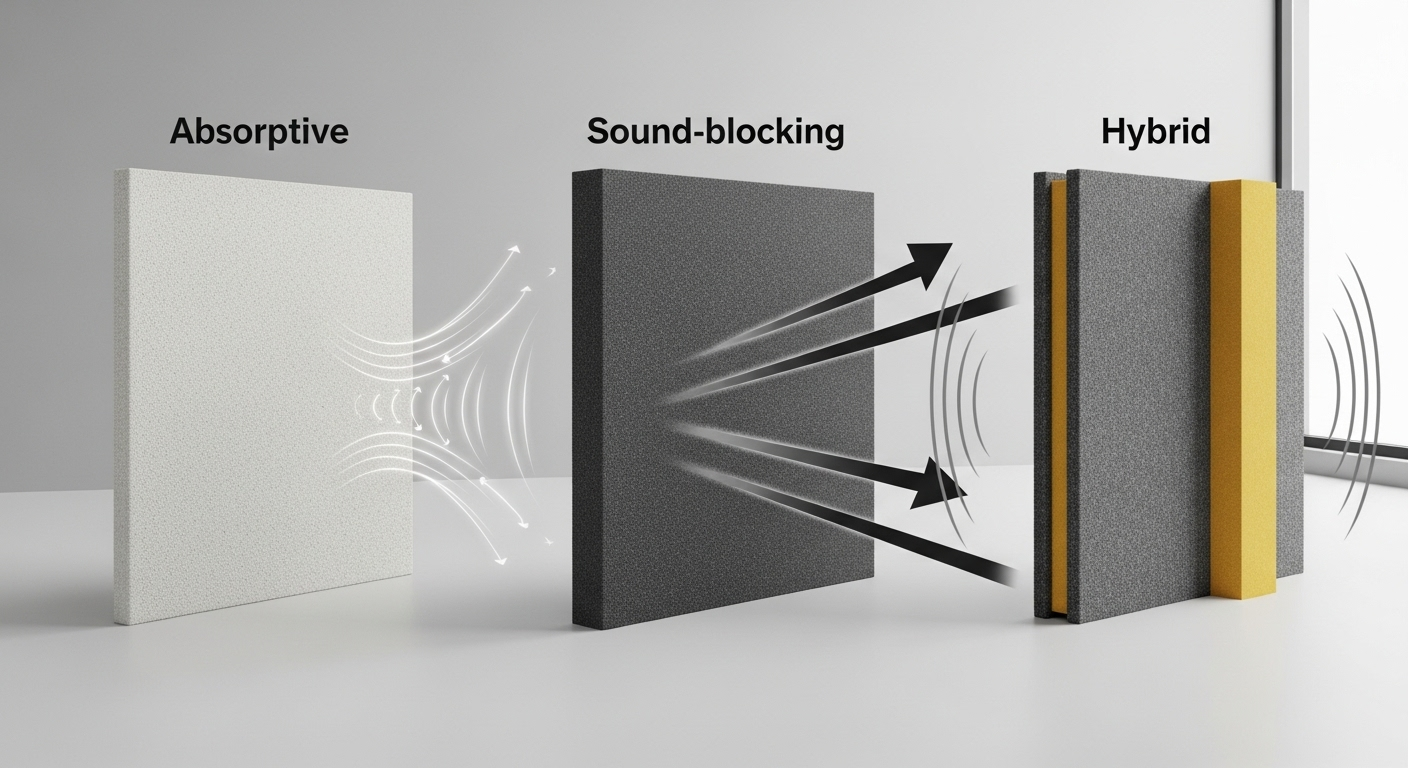
While material determines how a panel behaves physically, function determines how it performs acoustically. In simple terms, panels either absorb, block, or combine both qualities. Understanding this distinction is key when comparing types of acoustic wall panels and planning the right balance for your project.
Absorptive Acoustic Panels
Absorptive panels are designed to control how sound behaves inside a room. They don’t stop noise from escaping — instead, they reduce echo, flutter, and reverb by capturing sound waves that bounce off hard surfaces.
These panels are ideal for spaces where clarity matters: offices, classrooms, restaurants, and recording studios. They make conversations easier to understand and prevent that hollow, noisy feeling common in large or reflective rooms.
Fabric-wrapped panels, foam tiles, PET felt panels, and acoustic baffles all fall into this category. Each material type targets different frequency ranges. For instance, thick fiberglass panels handle deeper tones, while lightweight foam works well for mid-to-high frequencies.
When installed correctly, absorptive panels improve both comfort and acoustical definition — turning chaotic rooms into calm, well-balanced environments.
Sound-Blocking Acoustic Panels
Sound-blocking panels, on the other hand, prevent sound from passing through walls, ceilings, or floors. Instead of absorbing energy, they reflect and contain it using dense, heavy materials.
These panels are crucial for privacy and separation — such as between offices, hotel rooms, or apartments. They often feature layers of gypsum, mass-loaded vinyl, or mineral fiber inside a rigid frame. The added mass helps stop airborne sound like voices, music, or traffic from leaking through barriers.
Because blocking requires mass, these panels tend to be thicker and heavier than decorative absorbers. They can also be hidden behind drywall or architectural finishes to maintain the room’s design.
At New York Soundproofing, we use sound-blocking systems in combination with absorptive surfaces. That’s how you get both peace and pleasant sound within the same space.
Hybrid or Dual-Function Panels
Some environments need both isolation and internal control. For that, hybrid acoustic panels are the solution. These designs blend sound-blocking mass with absorptive materials to handle multiple challenges simultaneously.
Hybrid panels are ideal for recording booths, open-plan offices, conference rooms, and hospitality spaces — anywhere you want quiet boundaries and balanced interior acoustics.
For example, a high-end hotel meeting room may use hybrid wall panels that block hallway noise while keeping speech intelligible inside. In studios, layered systems combine absorptive fabric panels with heavy vinyl barriers underneath to achieve both goals.
Acoustic Panel Types for Different Spaces
Not all rooms are created equal — and neither are their acoustic needs. The type of sound you’re dealing with and the way a room is used both determine which panel works best. A recording studio requires precision, while a busy restaurant needs comfort and clarity. At New York Soundproofing, we tailor every project to the environment.
Home and Apartment Spaces
For living rooms, home theaters, and apartments, we focus on aesthetics and sound balance. Fabric-wrapped acoustic panels are ideal here. They reduce echo without making the room feel dull. If you’re trying to stop noise from neighboring units, we often combine these panels with soundproof barriers inside walls or ceilings. Decorative panels can even double as art pieces — you get acoustic performance without losing style.
Offices and Commercial Environments
Open offices and conference rooms often struggle with echo and speech clarity. Employees can’t focus, and meetings sound chaotic. In these spaces, we recommend acoustic ceiling clouds or hanging baffles, which control reverberation without taking up wall space. They help create calm, productive environments while maintaining an open, modern look.
For restaurants and retail, where visual design is key, wood acoustic panels or perforated wall panels offer a refined touch. They subtly manage noise without disrupting the ambiance. Guests notice the comfort, not the treatment.
Studios and Creative Spaces
Studios, rehearsal rooms, and post-production suites require precision. Here, foam panels, bass traps, and diffusers are essential. These control reflections, balance frequencies, and prevent build-up in corners. Professional setups often mix materials — soft absorption for mids and highs, dense barriers for low-end control.
Our studio projects in Brooklyn and Manhattan often combine custom acoustic wall panels with mass-loaded vinyl or resilient channel systems to achieve that silent, perfectly tuned room that every artist or sound engineer dreams of.
Custom Acoustic Panels and Design Flexibility
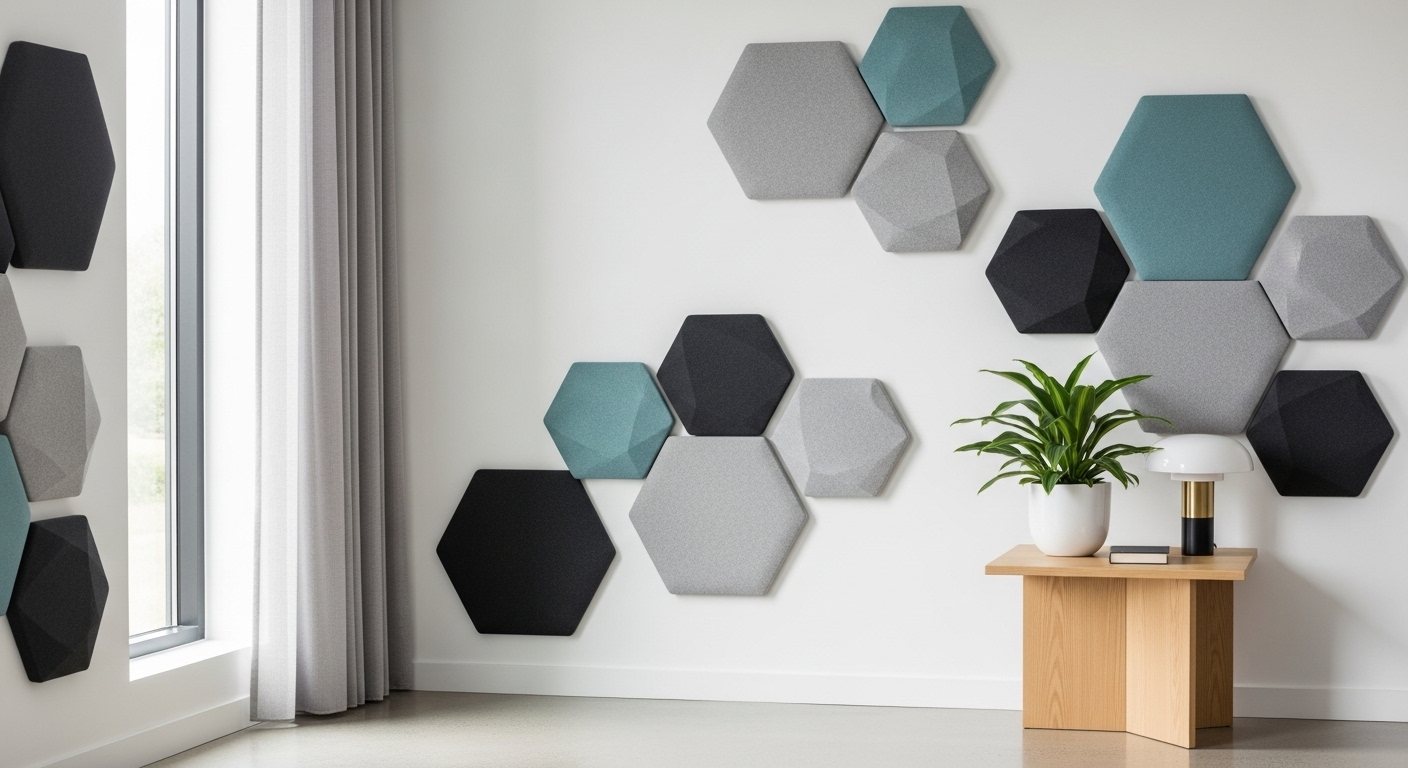
Modern interiors demand more than plain rectangles on the wall. That’s where custom acoustic panels come in. We design panels in any size, color, or shape to fit the look of a space. From geometric layouts in creative offices to fabric-matched panels in upscale apartments — the options are endless.
Customization isn’t just about looks. It allows us to fine-tune performance. Some clients need panels that absorb more sound; others need reflective finishes for balanced acoustics. With modern manufacturing, we can combine layers, densities, and finishes to achieve exact results.
Architects and designers love this flexibility. Acoustic treatment no longer means compromising aesthetics. With materials like PET felt, fabric-wrapped cores, and perforated wood, you can create spaces that sound as good as they look.
Finding the Right Acoustic Panel Type for Your Needs
If you’re unsure where to start, begin with your goal. Do you want to stop noise from traveling, or simply make your space sound better? Each acoustic panel type serves a specific purpose.
For echo control and clarity, choose lightweight absorptive panels. For privacy and isolation, go for dense, mass-based options. For open areas with multiple sound sources — like restaurants or offices — a mix of hanging baffles and wall panels gives the best balance.
At New York Soundproofing, we guide our clients through every step: evaluation, material selection, and installation. Every space is unique, and so is every acoustic plan. The right combination of different types of acoustic panels can completely change how a room feels — quieter, clearer, and more comfortable to live or work in.
Because great acoustics don’t just happen. They’re designed, tested, and installed with purpose. And that’s what we do best.
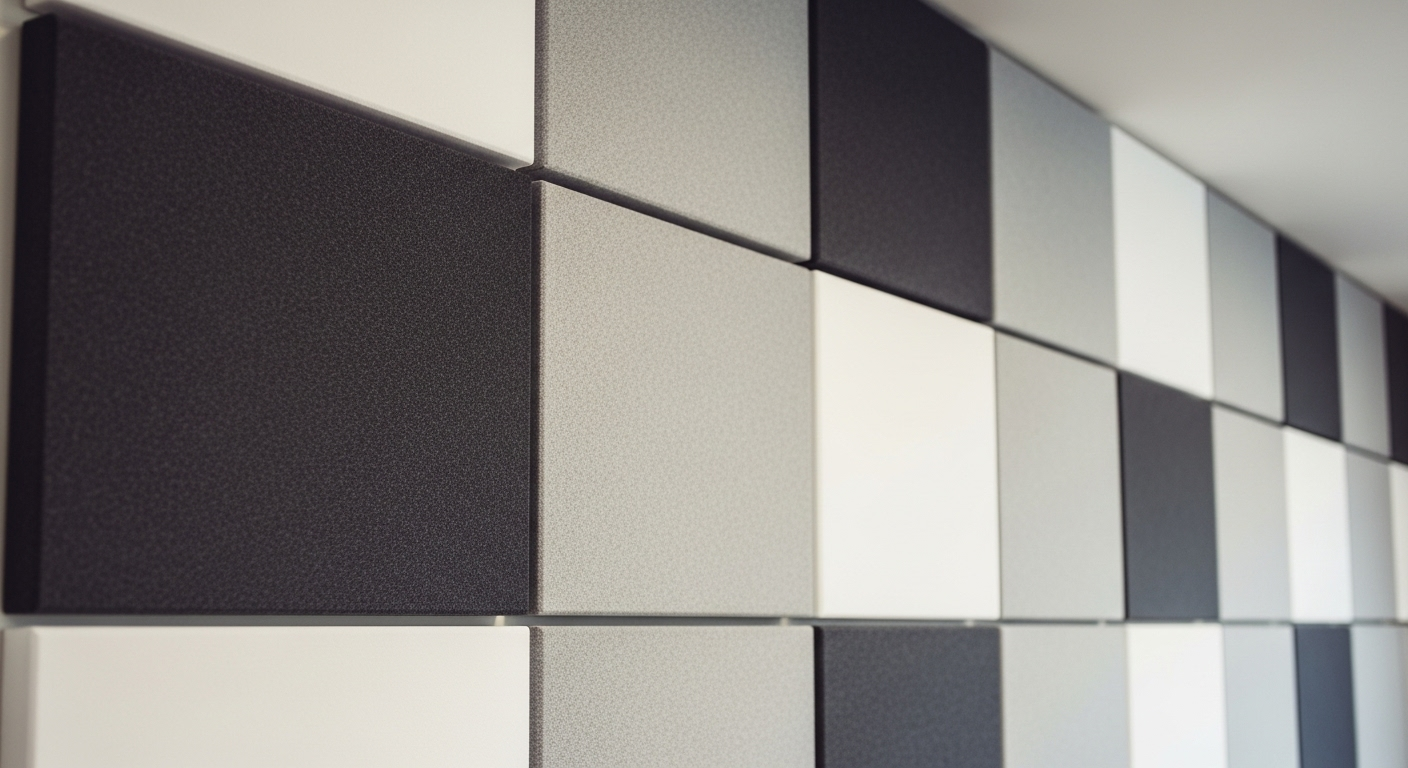
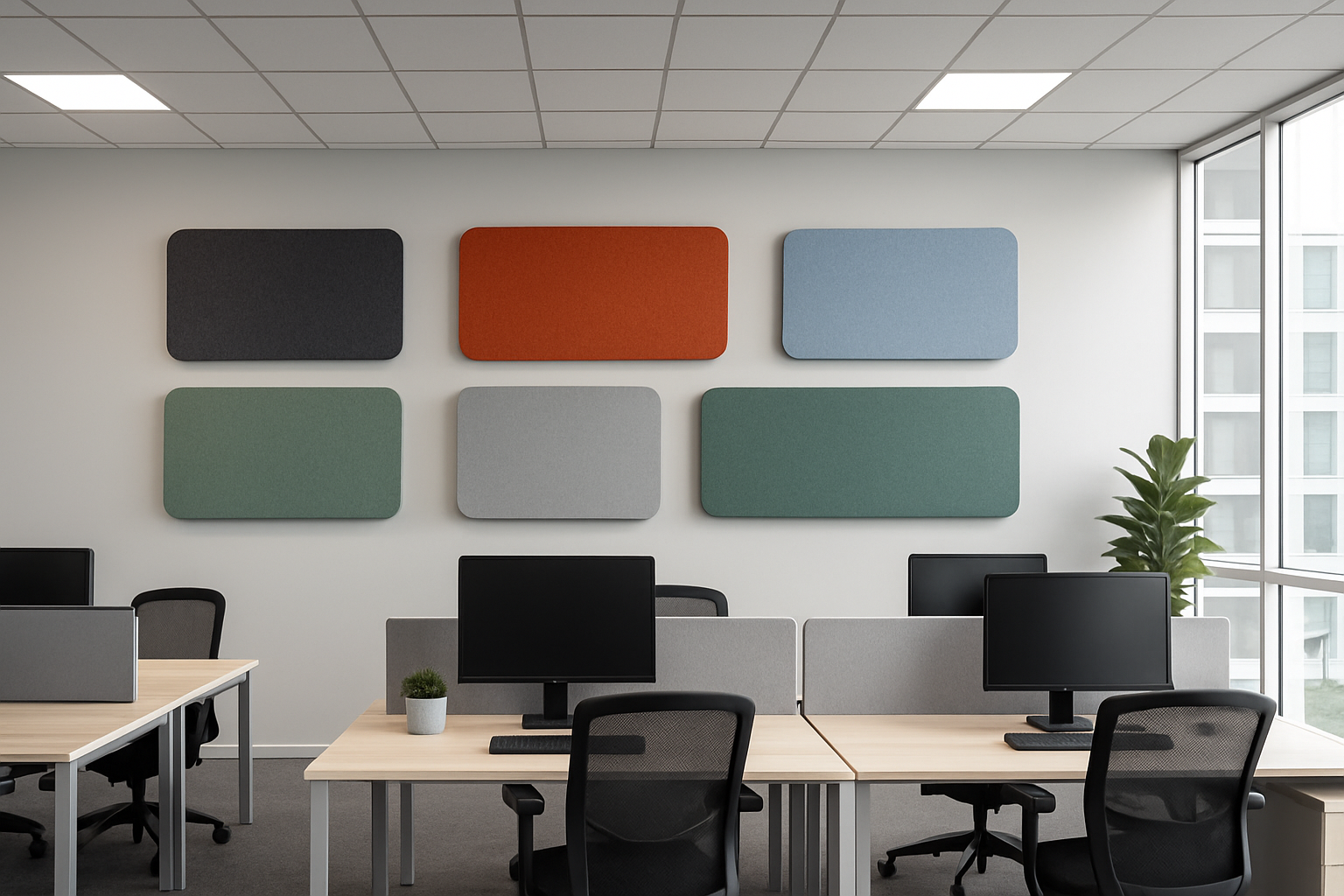
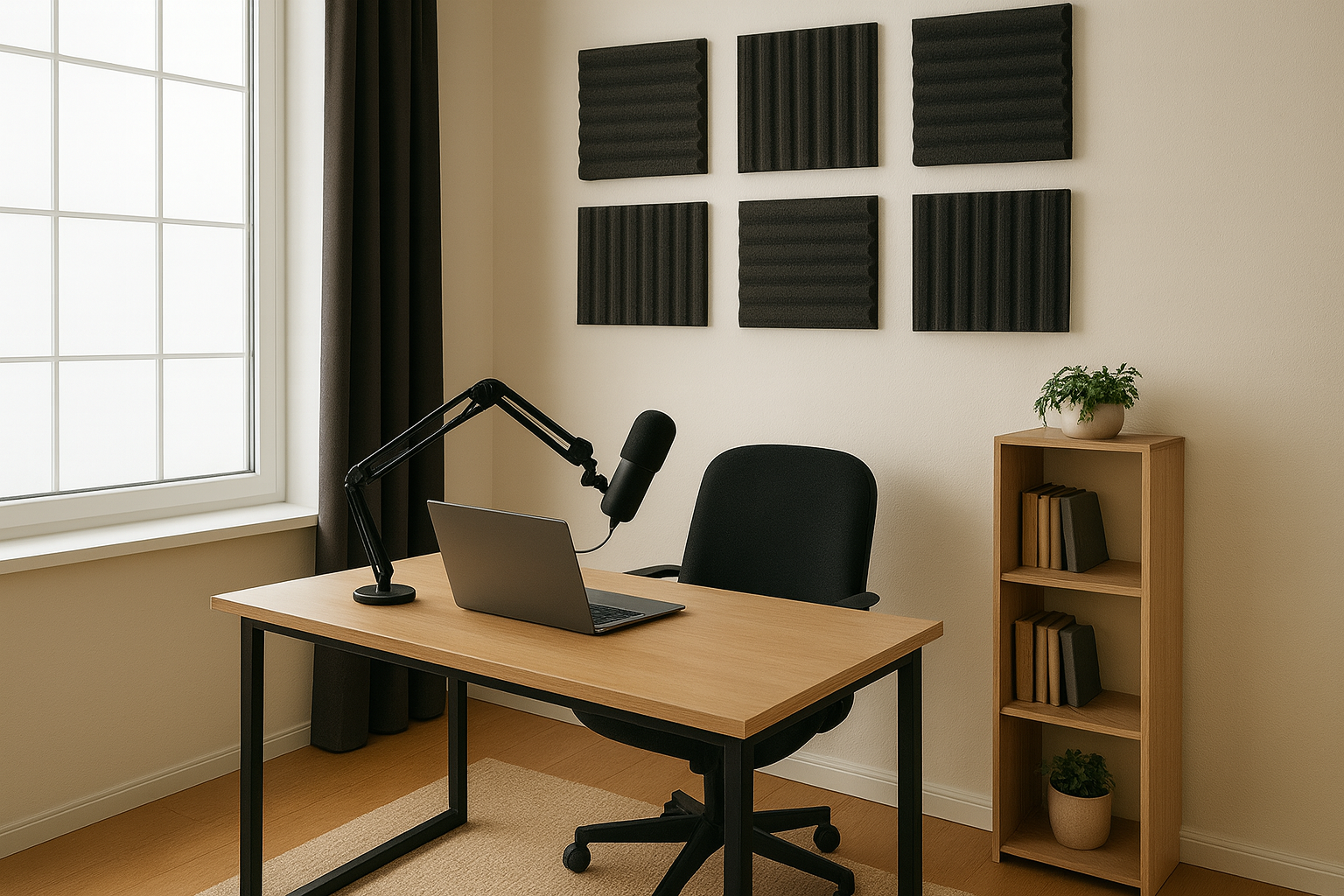
.png)